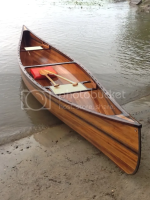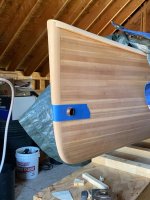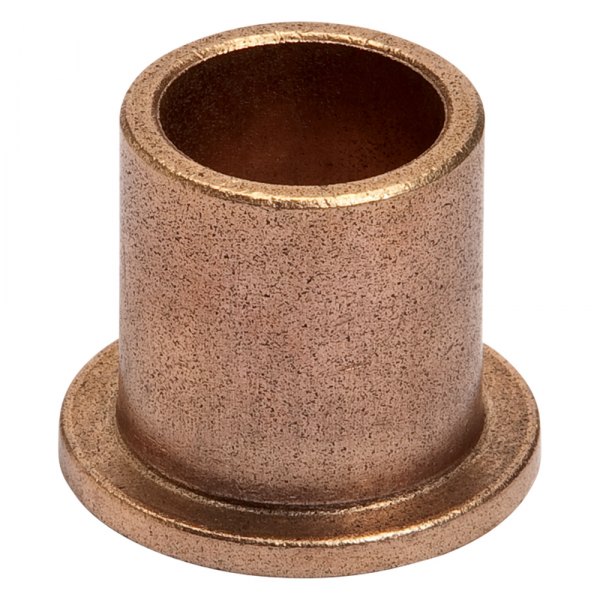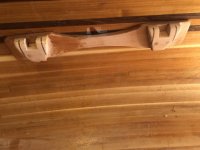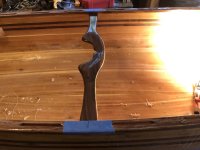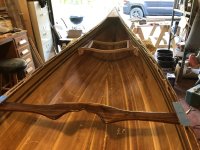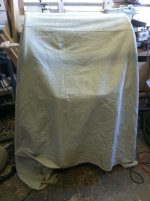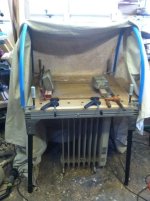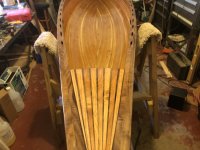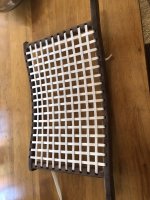Well, I thought I was going to finish this weekend, but two rather disheartening set-backs. When I was doing final sanding on the inside, prior to varnishing, I noticed an area on the outside of the hull by the stem that I wasn't happy with. The edge of the bias strip was still noticeable to the eye and feel. I decided to sand, and skim with a light layer of epoxy in this area only. Looked great. Took about a week to get the inside varnished, 4 coats. Flipped it over, cleaned the outside, and started varnishing. After 3 coats, the area I had skimmed with epoxy started "gator skinning". It had cured for about a week, and I light sanded that area.
I decided to install seats & yoke, then flip it over, light sand the entire hull ( a little heavier sanding on the gator skin), then two more coats of varnish.
Problem #2. I wanted the look of brass hardware for seats & yoke. Went through McMaster-Carr, bought 1/4-20 brass button head for the yoke, 10-24 for the seats (high strength, 50K PSI tensile). I also bought threaded inserts for hardwood. Putting all fasteners in by hand, being extremely careful to not over tighten. First yoke screw went in fine. Second one, as soon as it got snug, the head sheared off. Upon inspection, there's only .020-.025" of material remaining between the socket recess, and the shaft of the screw. Now I have to rethink my fastener choice. Put the seats on hold until I decide on fasteners, because I want them to match.
What I thought was going to be a couple hours left to complete the canoe, turned into much more, and I'm no further along than I was before the weekend.

